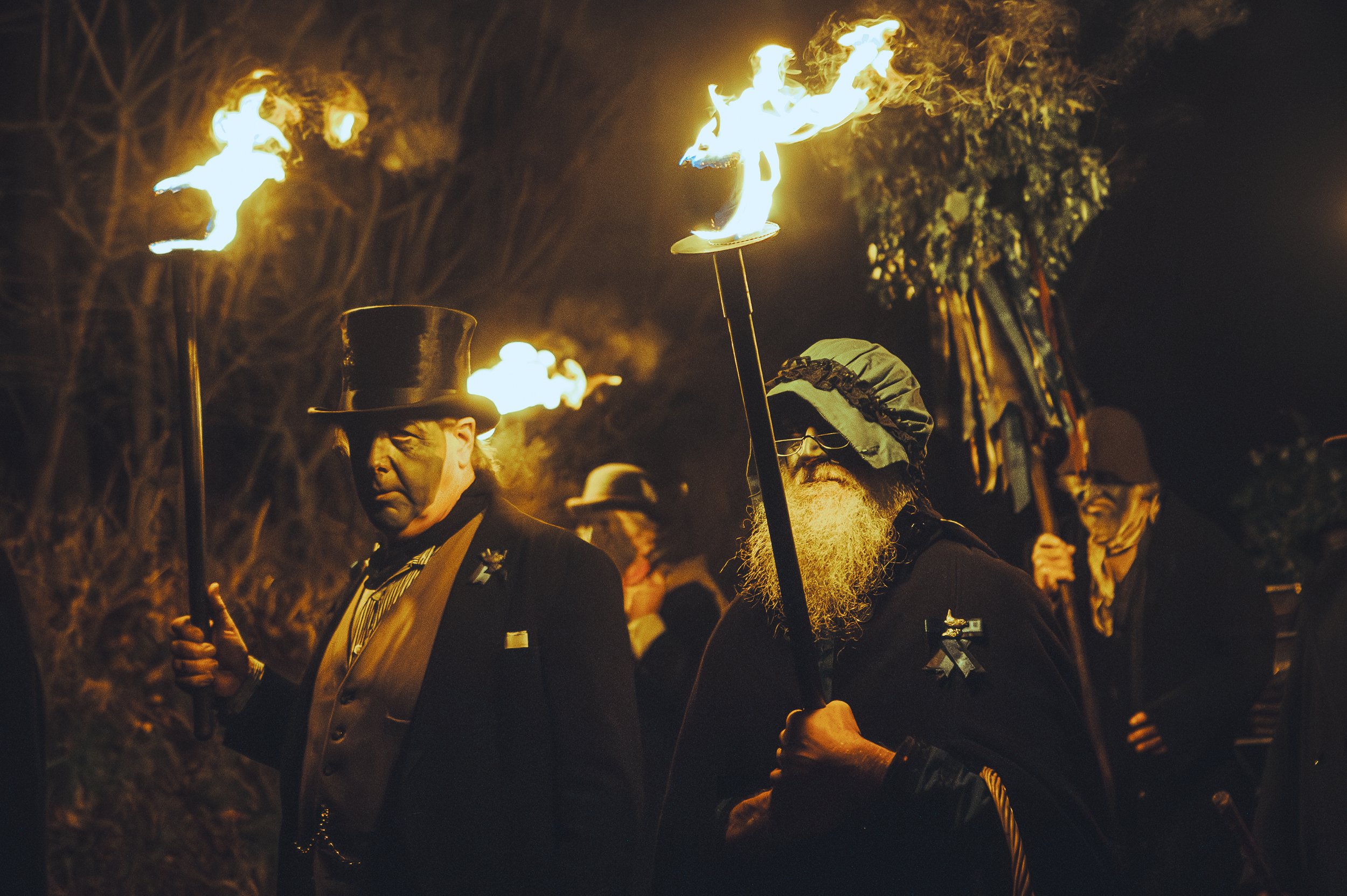
The wren
the king of all birds
The procession winds through the quiet village, its participants cloaked in somber silence, their faces painted dark. At the heart of the procession strides the wren-bearer, carrying aloft a pole topped with a cage adorned in green garlands and woven ivy. Within its veiled confines lies the hidden form of the Cutty Wren, the symbolic "king of the birds”.
Cutty Wren
Within the village of Middleton, Suffolk, England, a unique cultural practice persists. Each St. Stephen's Day (December 26th), a dedicated group of Molly Dancers and musicians, known as the Old Glory, revives the ancient tradition of the Cutty Wren. Celebrated across parts of Europe, this custom carries echoes of an ancient past, potentially stretching back to the Neolithic. While shrouded in mystery, this custom reveals captivating links between various ancient cultures, their reverence for nature, and their cyclical understanding of time.
“The ritual nature of the true Wren Hunt is evident from the fact that its central feature was the ceremonial and public performance, in order to ensure good luck and avert evil, of an act which would have been thought extremely ill-omened at any other time. In folk-tradition, the wren was the King of the Birds, and like the robin and the swallow, it was sacred and must never be killed or harmed. It was widely believed and still is in some districts, that serious misfortune would befall any who injured these birds, destroyed their nests, or stole their eggs.”
Christiana Hole in “Britih Folk Customs”
Historically, the tradition centred around the winter solstice involved the capture and, in some instances, harm of the wren. Acknowledging the ethical concerns surrounding this practice, The Old Glory transitioned to using a symbolic wooden representation of the bird in its performance. This revival in the 1990s revitalized a fading cultural custom. The Old Glory aimed to maintain the tradition's authenticity through meticulous research and dedication while ensuring its alignment with contemporary ethical considerations.
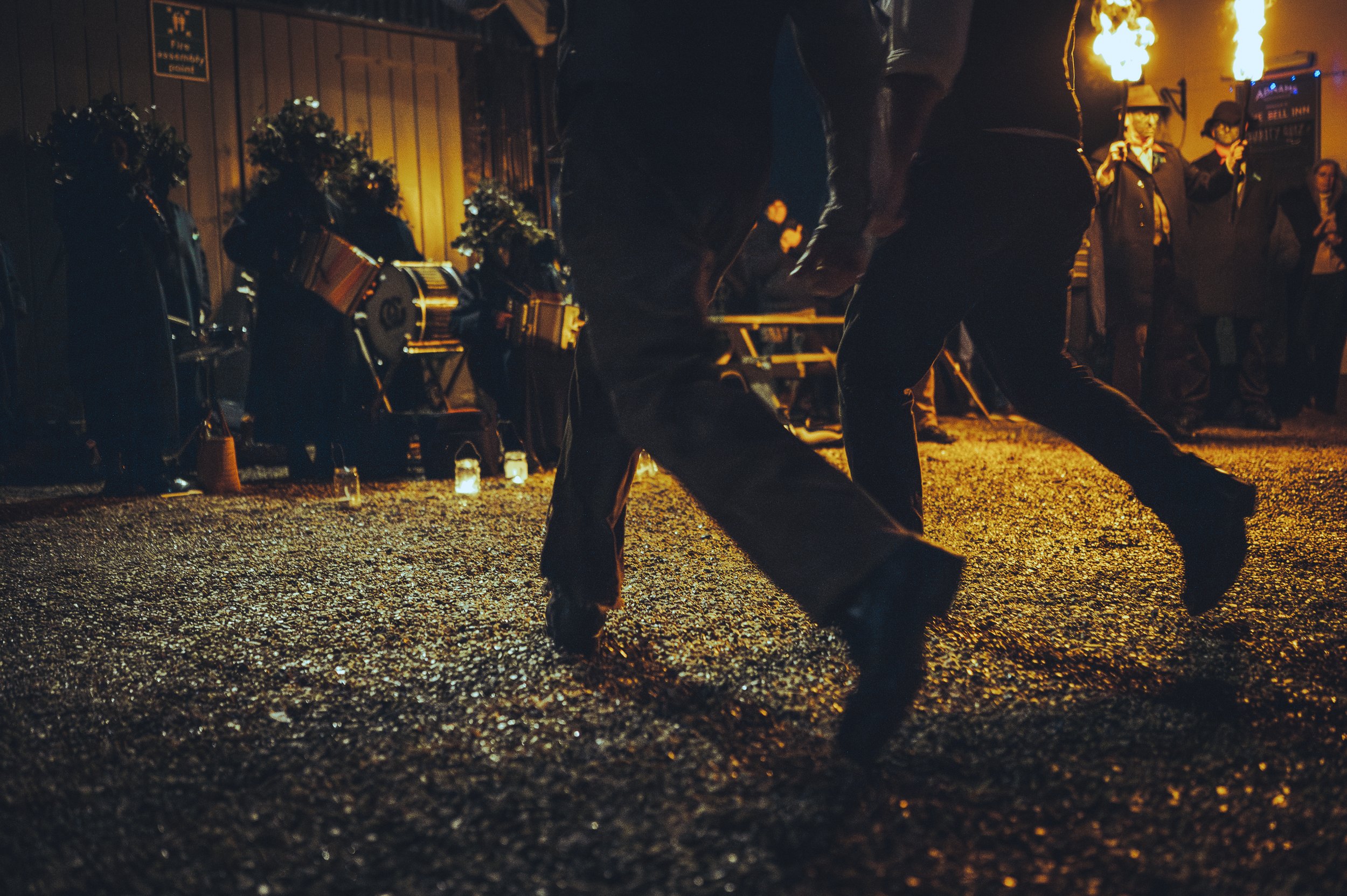
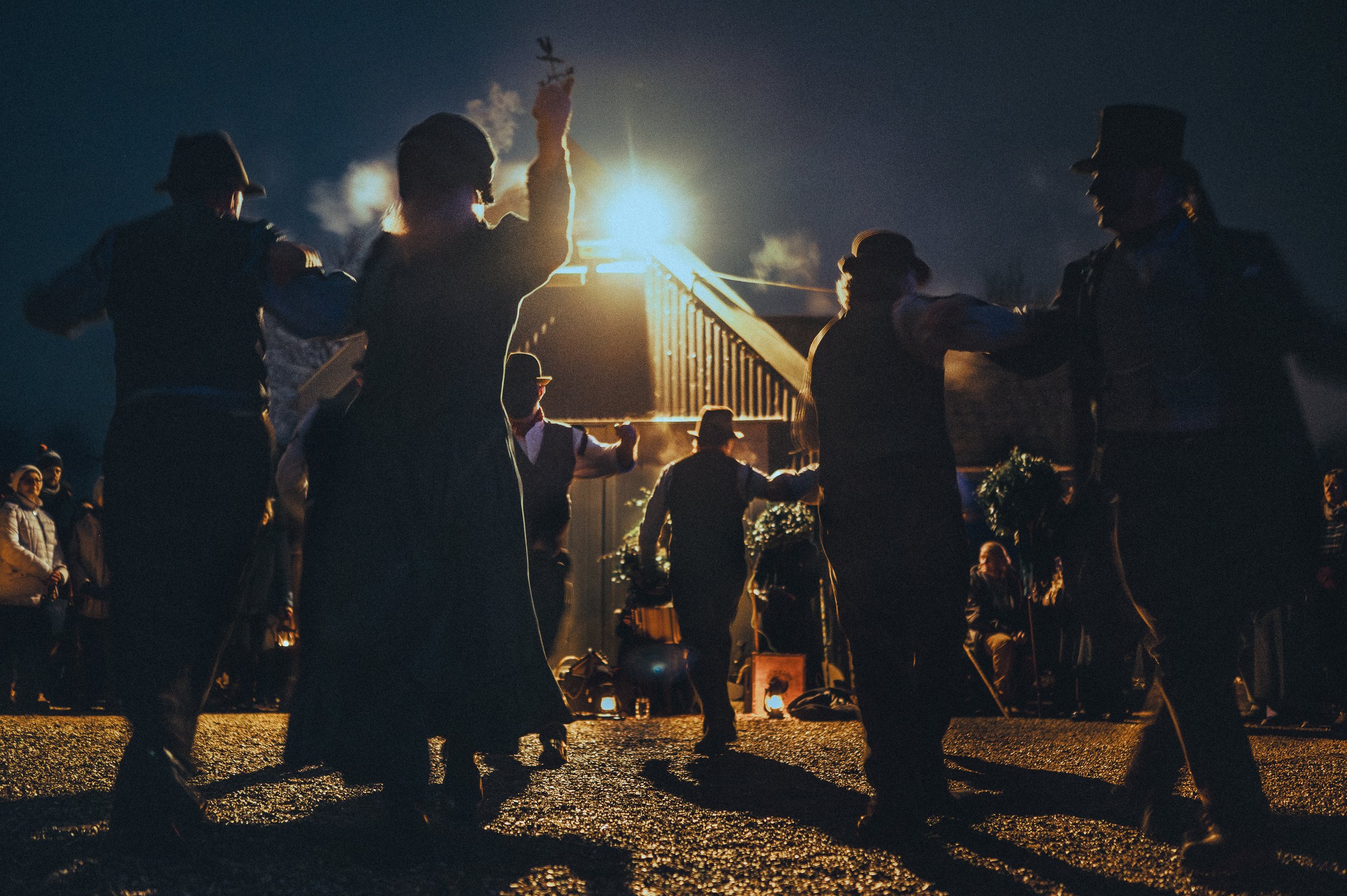



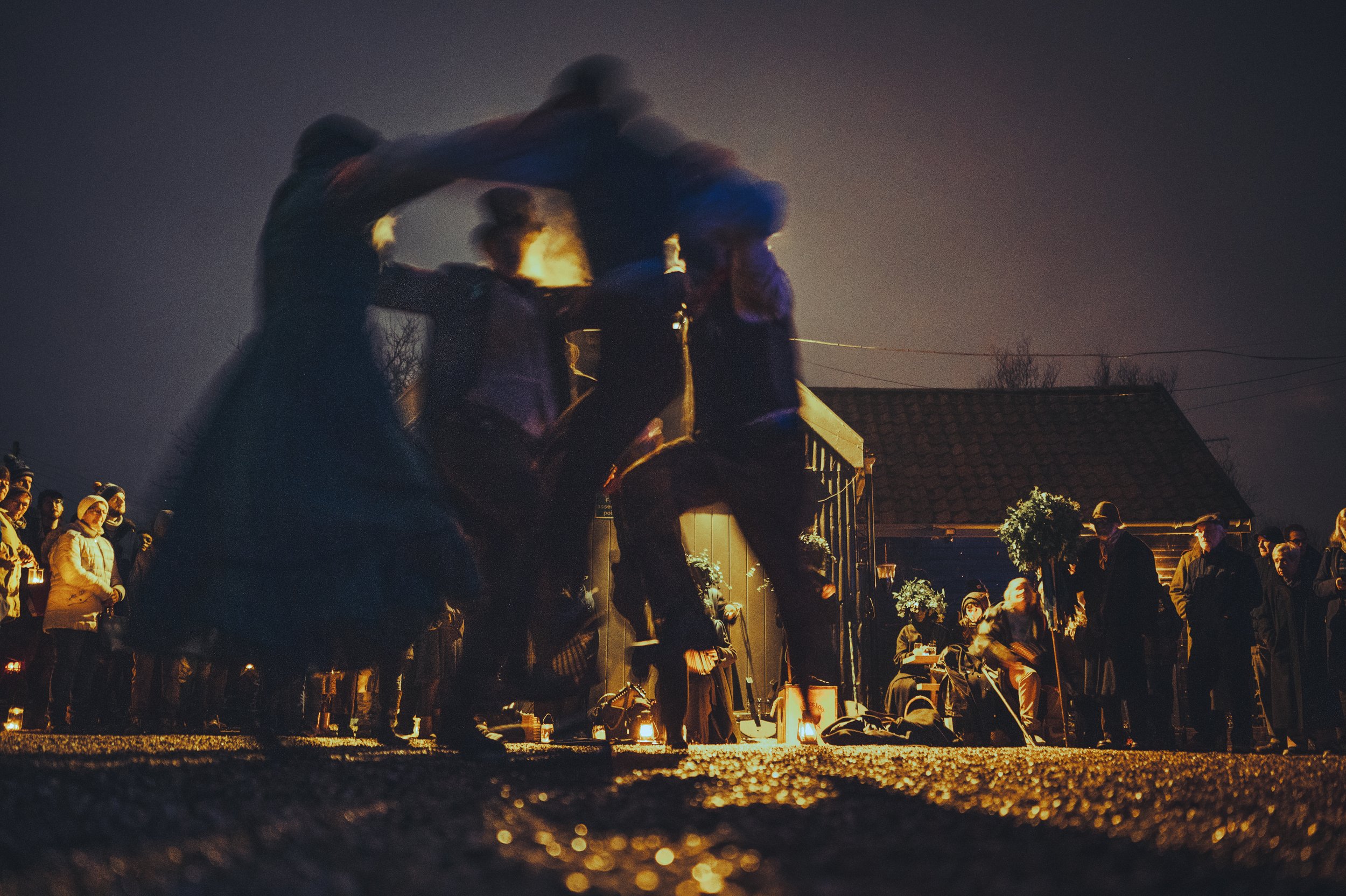
Old Glory
Beneath the fading torchlight's mesmerizing glow, the performance unfolds on the ground before the Bell Inn. An otherworldly aura washes over the dancers as their hobnailed boots pound the earth in a primal rhythm that resonates through the night. Figures blur and merge in the flickering light, their slow-paced steps and formations a whirlwind of movement.
The heavy stomping and swirling around the central "wren bearer" hints at an ancient ritualistic dance. Old Glory’s use of disguise aligns with a broader tradition. A top-hatted Lord, wielding a walking stick, and a Lady in a flowing gown and bonnet, complete with a long white beard, form an intriguing duo.
Traditionally performed during the winter months when agricultural work was scarce, these dances often featured performers hidden behind soot-blackened faces and women's clothing. Notably, the "molly" figure, typically a man dressed as a woman, could potentially evade arrest in view that women were exempt from legal repercussions, offering a degree of protection to the performer.
The Bell Inn
Crammed shoulder to shoulder, the crowd surged like a wave towards the Bells Inn, bursting into the bar and spilling into every nook and cranny. Then entered the Wren-bearer, his face painted dark and an emerald ivy garland draped over the pole in his grip.
He weaved a tale, transporting the audience to a world where birds held court, their melodies and carols echoing through the forest halls. The tiniest among them dared to dream of the crown. In the Wren-bearer's voice, the wren became a hero, his small stature no match for his cunning wit. He outsmarted the proud eagle, eventually claiming the crown.
All of a sudden, the boots pounded the floorboards again, bodies slamming into the tightly packed patrons as laughter dissolved into cheers. As the night wore on, tales unfolded and songs echoed through the rafters. Gradually, the crowd thinned. The Old Glory dancers, their boots still dusty from the dance, settled back onto worn stools, sipping hard-earned pints with the satisfaction of a tradition upheld.
"The wren, the wren, the king of all birds
On St Stephen's Day was caught in the furze
Although he was little, his power is great
So up with the kettle and down with the plate!"
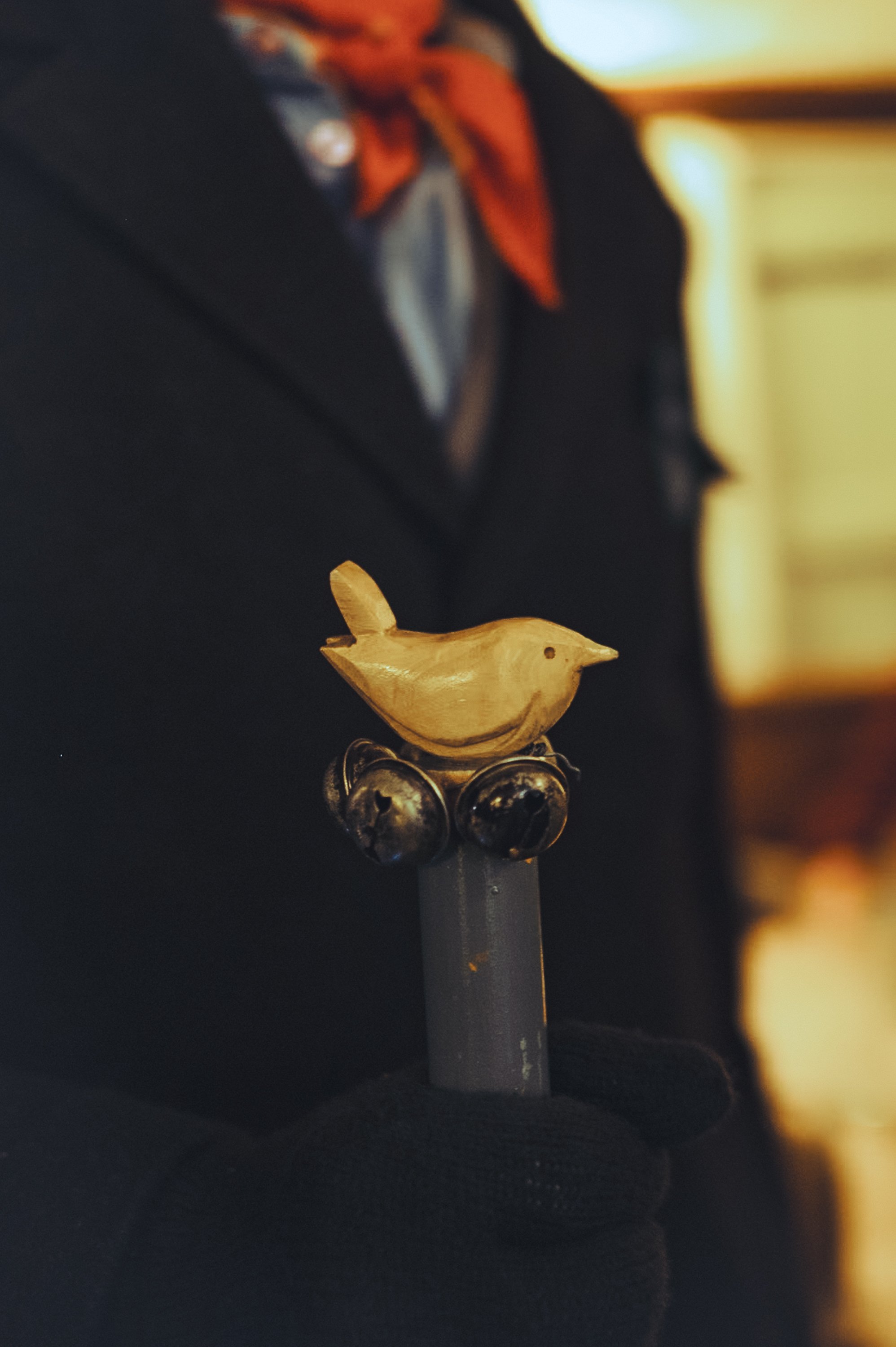

A huge thank you to Angie and John for being the most wonderful guides to Suffolk! I’m so grateful for your kindness in sharing the county’s secrets with me. Experiencing the unique Cutty Wren celebrations at Middleton was an absolute privilege. To catch glimpses of Suffolk’s rich history like that is truly unforgettable.




